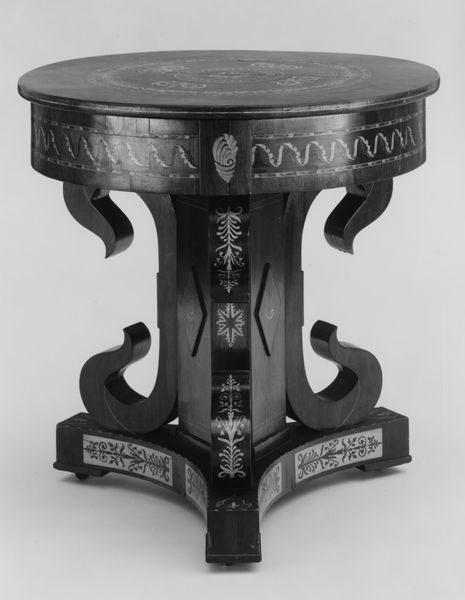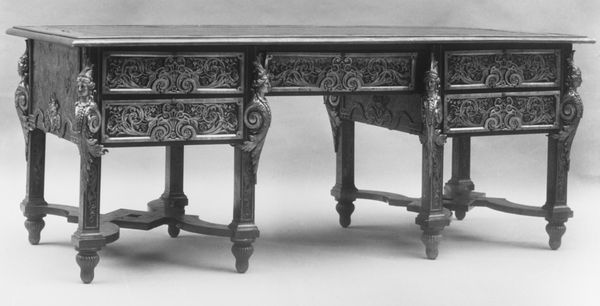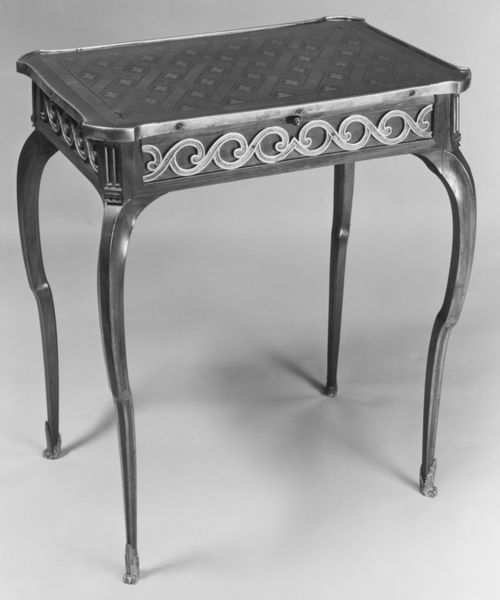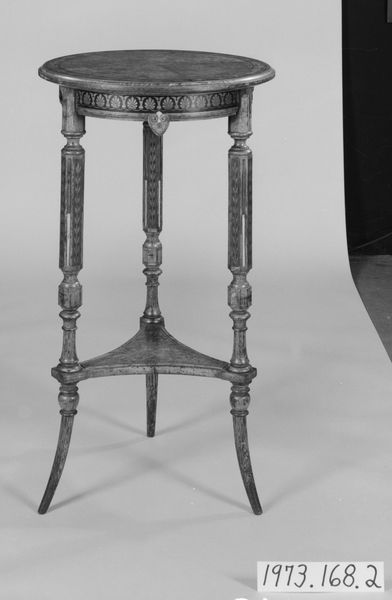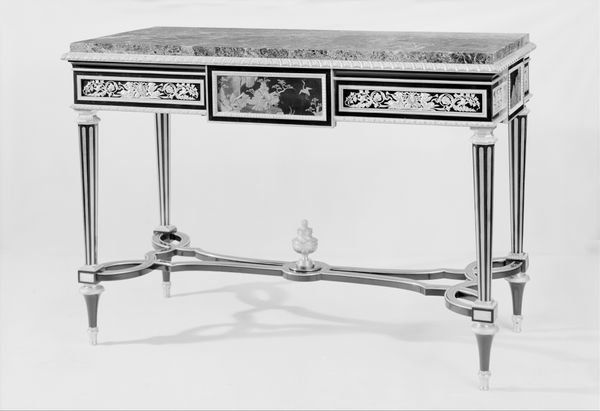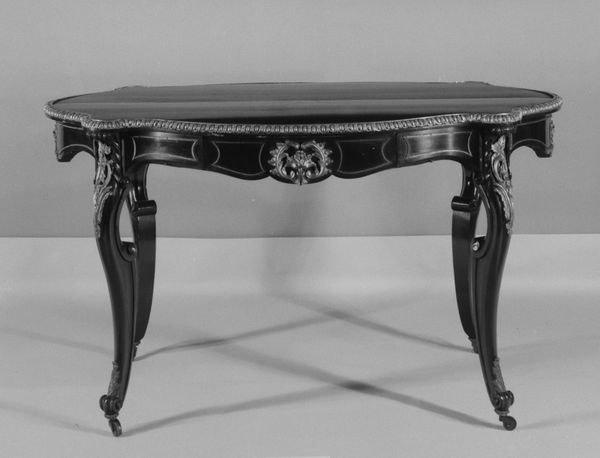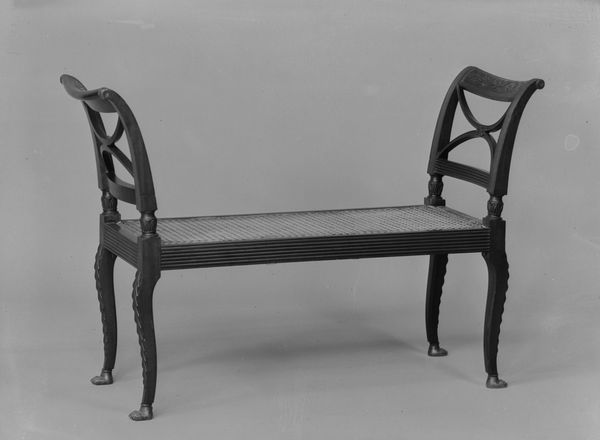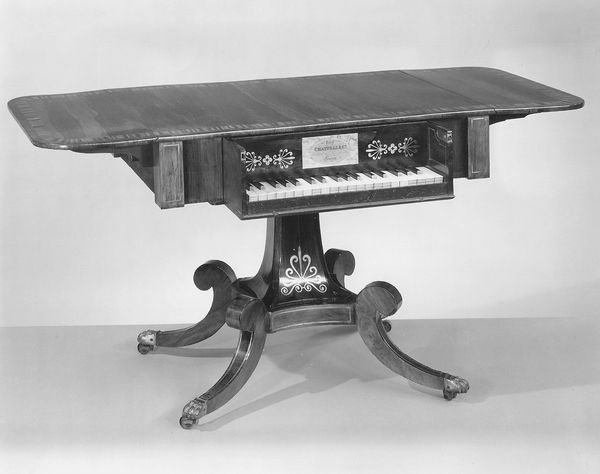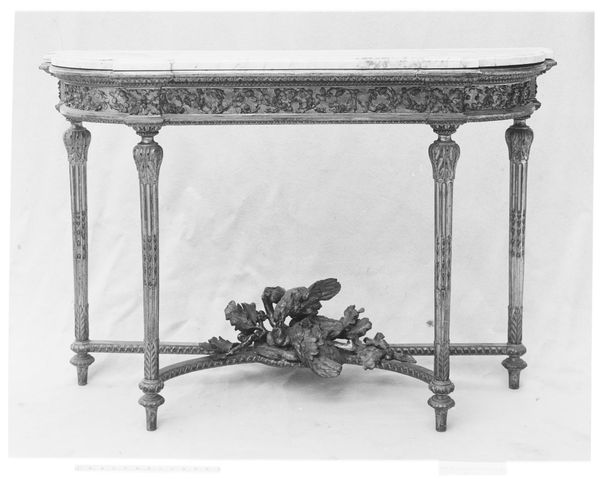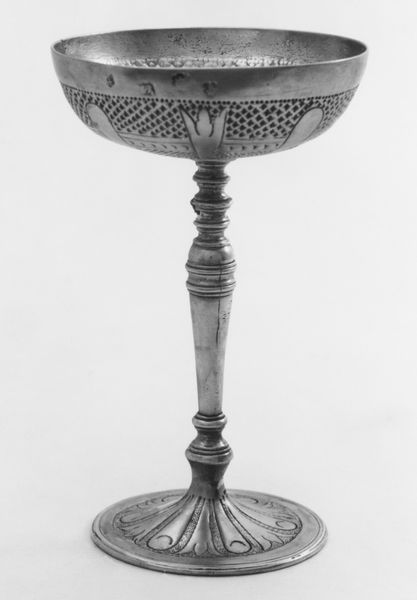
wood
#
neoclacissism
#
sculpture
#
furniture
#
geometric
#
wood
#
decorative-art
Dimensions: 28 3/4 x 36 3/8 x 35 7/8 in. (73 x 92.4 x 91.1 cm)
Copyright: Public Domain
Editor: Here we have "Card Table," crafted around 1815-1820, and residing at the Metropolitan Museum of Art. It’s a gorgeous piece of wooden furniture, a peculiar yet inviting form with all the curves, yet with a rigid dark geometry, what should we consider about this object? Curator: Considering its Neoclassical style, and when and where it was made, we might explore how power dynamics are embedded within domestic spaces, like here with this furniture that alludes to wealthy aristocratic societies. Who was afforded the luxury of leisure and beautiful surroundings during this period? How did material culture contribute to social stratification and construct notions of gentility? Editor: So, it's not *just* a pretty table; it speaks to a broader historical and social landscape? Curator: Exactly. The table's craftsmanship signifies not just skill, but the resources and social structure that supported such craftsmanship. Consider the material itself: Where did the wood come from, and who was involved in its extraction and trade? Then there is the table's function: who had time for playing cards, and who had access to the gambling games and circles, who are probably men in suits making even further class discriminations. Editor: That certainly shifts my understanding. I’m seeing it less as an isolated object and more as an artifact of complex relationships. But why neoclassical? Is that relevant to the message? Curator: The choice of Neoclassicism itself could be a signifier, maybe evoking notions of Republican virtues and stability for those with property to protect, ideals often romanticized during a turbulent post-revolutionary era. How might the owners of this piece have understood their place in the world, vis-à-vis these symbolic references to ancient grandeur? It could reflect a deliberate effort to align themselves with certain notions of "civilization" and rightful leadership. Editor: So, looking at the Card Table we can address the power structures around production, status and class? I suppose, what appears decorative has a lot to teach us. Curator: Precisely, challenging us to examine whose stories are told, and whose are often marginalized in traditional narratives of art history. We have to start thinking about who makes the furniture as much as who buys it.
Comments
No comments
Be the first to comment and join the conversation on the ultimate creative platform.


